MondoA regulates gene expression in cholesterol biosynthesis-associated pathways required for zebrafish epiboly
- PMID: 32969791
- PMCID: PMC7515633
- DOI: 10.7554/eLife.57068
MondoA regulates gene expression in cholesterol biosynthesis-associated pathways required for zebrafish epiboly
Abstract
The glucose-sensing Mondo pathway regulates expression of metabolic genes in mammals. Here, we characterized its function in the zebrafish and revealed an unexpected role of this pathway in vertebrate embryonic development. We showed that knockdown of mondoa impaired the early morphogenetic movement of epiboly in zebrafish embryos and caused microtubule defects. Expression of genes in the terpenoid backbone and sterol biosynthesis pathways upstream of pregnenolone synthesis was coordinately downregulated in these embryos, including the most downregulated gene nsdhl. Loss of Nsdhl function likewise impaired epiboly, similar to MondoA loss of function. Both epiboly and microtubule defects were partially restored by pregnenolone treatment. Maternal-zygotic mutants of mondoa showed perturbed epiboly with low penetrance and compensatory changes in the expression of terpenoid/sterol/steroid metabolism genes. Collectively, our results show a novel role for MondoA in the regulation of early vertebrate development, connecting glucose, cholesterol and steroid hormone metabolism with early embryonic cell movements.
Keywords: carbohydrate response element; cholesterol; developmental biology; epiboly; genetics; genomics; metabolism; microtubule; pregnenolone; zebrafish.
Plain language summary
In most animals, a protein called MondoA closely monitors the amount of glucose in the body, as this type of sugar is the fuel required for many life processes. Glucose levels also act as a proxy for the availability of other important nutrients. Once MondoA has detected glucose molecules, it turns genetic programmes on and off depending on the needs of the cell. So far, these mechanisms have mainly been studied in adult cells. However, recent studies have shown that proteins that monitor nutrient availability, and their associated pathways, can control early development. MondoA had not been studied in this context before, so Weger et al. decided to investigate its role in embryonic development. The experiments used embryos from zebrafish, a small freshwater fish whose early development is easily monitored and manipulated in the laboratory. Inhibiting production of the MondoA protein in zebrafish embryos prevented them from maturing any further, stopping their development at an early key stage. This block was caused by defects in microtubules, the tubular molecules that act like a microscopic skeleton to provide structural support for cells and guide transport of cell components. In addition, the pathway involved in the production of cholesterol and cholesterol-based hormones was far less active in embryos lacking MondoA. Treating MondoA-deficient embryos with one of these hormones corrected the microtubule defects and let the embryos progress to more advanced stages of development. These results reveal that, during development, the glucose sensor MondoA also controls pathways involved in the creation of cholesterol and associated hormones. These new insights into the metabolic regulation of development could help to understand certain human conditions; for example, certain patients with defective cholesterol pathway genes also show developmental perturbations. In addition, the work highlights a biological link between cholesterol production and cellular responses to glucose, which Weger et al. hope could one day help to identify new cholesterol-lowering drugs.
© 2020, Weger et al.
Conflict of interest statement
MW, AS, MT, JS, AK, JM, NK, US, GN, RM, TD No competing interests declared, BW BDW was an employee of Nestlé Health Sciences SA. CG CG was an employee of Nestlé Health Sciences SA. AP AP is an employee of Nestlé Health Sciences SA. FG FG was an employee of Nestlé Health Sciences SA. PG PG is an employee of Nestlé Health Sciences SA.
Figures
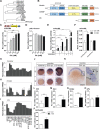
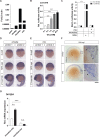


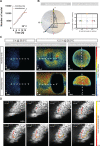
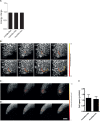



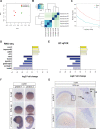
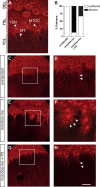
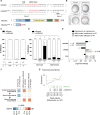
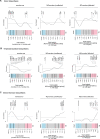
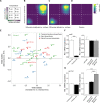


Similar articles
-
Split top: a maternal cathepsin B that regulates dorsoventral patterning and morphogenesis.Development. 2016 Mar 15;143(6):1016-28. doi: 10.1242/dev.128900. Epub 2016 Feb 18. Development. 2016. PMID: 26893345 Free PMC article.
-
Pregnenolone stabilizes microtubules and promotes zebrafish embryonic cell movement.Nature. 2006 Jan 26;439(7075):480-3. doi: 10.1038/nature04436. Nature. 2006. PMID: 16437115
-
Zebrafish epiboly: mechanics and mechanisms.Int J Dev Biol. 2010;54(8-9):1213-28. doi: 10.1387/ijdb.093028sl. Int J Dev Biol. 2010. PMID: 20712002 Review.
-
Requirement of Npc1 and availability of cholesterol for early embryonic cell movements in zebrafish.J Lipid Res. 2011 Jul;52(7):1328-44. doi: 10.1194/jlr.M012377. Epub 2011 May 16. J Lipid Res. 2011. PMID: 21576600 Free PMC article.
-
MondoA/ChREBP: The usual suspects of transcriptional glucose sensing; Implication in pathophysiology.Metabolism. 2017 May;70:133-151. doi: 10.1016/j.metabol.2017.01.033. Epub 2017 Feb 4. Metabolism. 2017. PMID: 28403938 Review.
Cited by
-
Reversible translocation of acyl-CoA:cholesterol acyltransferase (ACAT) between the endoplasmic reticulum and vesicular structures.Front Mol Biosci. 2023 Nov 10;10:1258799. doi: 10.3389/fmolb.2023.1258799. eCollection 2023. Front Mol Biosci. 2023. PMID: 38028547 Free PMC article.
-
Origin, form and function of extraembryonic structures in teleost fishes.Philos Trans R Soc Lond B Biol Sci. 2022 Dec 5;377(1865):20210264. doi: 10.1098/rstb.2021.0264. Epub 2022 Oct 17. Philos Trans R Soc Lond B Biol Sci. 2022. PMID: 36252221 Free PMC article. Review.
References
-
- Armant O, März M, Schmidt R, Ferg M, Diotel N, Ertzer R, Bryne JC, Yang L, Baader I, Reischl M, Legradi J, Mikut R, Stemple D, van IJcken W, van der Sloot A, Lenhard B, Strähle U, Rastegar S. Genome-wide, whole mount in situ analysis of transcriptional regulators in zebrafish embryos. Developmental Biology. 2013;380:351–362. doi: 10.1016/j.ydbio.2013.05.006. - DOI - PMC - PubMed
Publication types
MeSH terms
Substances
Associated data
- Actions
Grants and funding
LinkOut - more resources
Full Text Sources
Medical
Molecular Biology Databases

